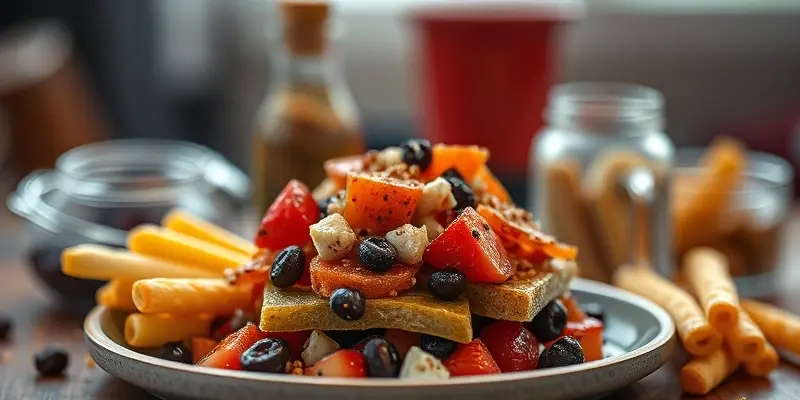Recovery isn’t just about rest—it’s about refueling the right way. Whether you’re a weekend warrior, a seasoned marathoner, or new to the fitness scene, what you eat after exercise could mean the difference between steady progress and nagging injuries. Let’s break down how smart snacking can be your secret weapon—and give you concrete snack ideas to boost recovery and injury prevention.
The Science of Recovery & Injury Prevention in Endurance Sports
Ever wonder why muscles get sore or injuries seem to pop up the day after a tough session? It’s all about what happens under the hood. When you push yourself, your muscles use up stored energy (glycogen) and create tiny tears—this is how you get stronger. But without the right nutrients at the right time, recovery stalls and inflammation lingers, making you more prone to setbacks.
- Glycogen replenishment restores energy for your next session.
- Muscle repair happens with the help of protein.
- Inflammation control keeps you moving pain-free.
Think of your body as a high-performance car: regular tune-ups (rest and recovery nutrition) keep it running smoothly, while neglect leads straight to a breakdown (injury). For additional strategies on recovery, check out our injury recovery checklist to make sure you’re covering all bases.
What Makes an Ideal Endurance Recovery Snack?
Not all snacks are created equal—especially when recovery and injury prevention are your goals. Here’s what to look for:
- Carbohydrates: They refill muscle glycogen. Aim for complex sources (whole-grain bread, fruit, oats).
- Protein: It supports muscle repair. Options like Greek yogurt, eggs, or cottage cheese pack a punch.
- Healthy Fats: Nuts, avocados, and seeds help with cell repair and joint health.
- Antioxidants: Berries, leafy greens, or tart cherry juice reduce inflammation and muscle soreness.
- Hydration and Electrolytes: Water, coconut water, or bananas help muscle function and speed up tissue repair.
Picture your snack as a balanced “recovery toolbox”—emphasizing variety and color for full-body benefits.
Evidence-Backed Endurance Snack Ideas
Let’s get practical! Here are some top choices, backed by science and tested in the real world.
- Greek Yogurt with Berries: High in protein for muscles and antioxidants for less soreness.
- Peanut Butter & Banana on Whole-Grain Bread: Complex carbs and healthy fats, plus potassium for electrolyte balance.
- Chocolate Milk: Research supports its ideal carb-to-protein ratio for fast recovery—plus it’s portable.
- Protein Smoothie with Banana & Berries: Quick-digesting energy, customizable with whey or plant-based proteins.
- Cottage Cheese & Pineapple: Casein protein gives extended muscle support; pineapple adds vitamin C.
- Hummus & Veggies: Plant protein, vitamins, and fiber for sustained energy.
- Tart Cherry Juice Spritzer: Not a meal, but powerful for fighting inflammation and speeding up muscle healing.
- Homemade Energy Bars (Oats + Nuts + Seeds + Dried Fruit): Easy to make ahead and take anywhere.
Tip: Choose snacks that are quick to prepare and easy to grab, especially if your schedule is packed.
Snack Timing, Practical Strategies, and Common Pitfalls
Timing truly is everything. Research shows you should aim to eat within 30–45 minutes after your workout for best results. This is when your muscles are like sponges, ready to soak up nutrients and kickstart the repair process.
Practical Tips:
- Prep Ahead: Pack pre-portioned snacks in your gym bag or fridge so you never miss the recovery window.
- Listen to Your Body: Adjust portion sizes based on how intense/long your session was.
- Hydrate First: Sometimes thirst masks as hunger after exercise; drink water or an electrolyte-rich beverage before eating.
Common Pitfalls:
- Relying on Processed Snacks: They’re often low in nutrients and high in sugar; whole foods work better.
- Skipping Snacks Altogether: Missing the window may mean longer soreness, slower gains, or greater odds of injury.
- Overeating: Snacks should support—not undo—calorie balance, especially if your goal is body composition.
Final Takeaways: Making Recovery Nutrition a Consistent Habit
Building a strong, healthy body isn’t just about what you do in the gym or on the track—it’s what you put in your mouth afterward. Start simple: pick two or three snacks from the list above, prep them in advance, and see how your body responds. Consistency is king.
Remember, every athlete—from beginner to pro—deserves the best chance at recovery and injury prevention. Treat your recovery snacking like a crucial part of your training routine. Your future self (and your muscles, joints, and bones) will thank you.
Ready to fuel your next workout the smart way? Try these tips for a week, and let us know how you feel. Because at GymPulse Club, we’re here to help you stay strong, healthy, and motivated—one snack at a time.

